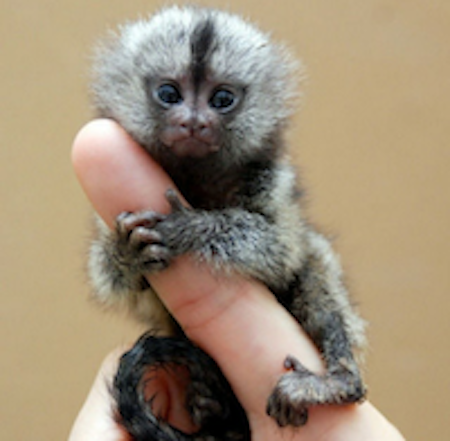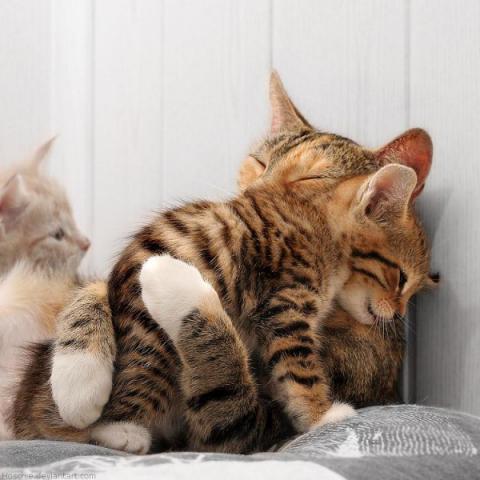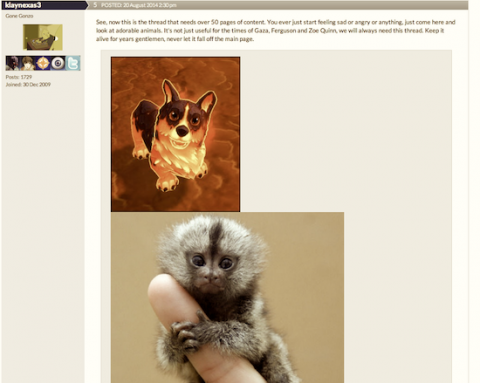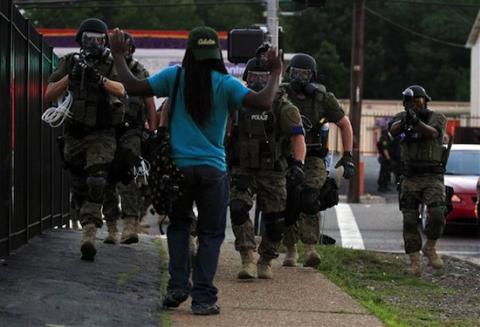Browsing Between Cute Baby Animals and Tragedy

Image Credit: klaynexas 3, escapistmagazine.com
A post that links to images of cute animals is a common sight on Facebook these days. We share articles such as “13 Pictures of Humans Hugging Animals That Will Make You Feel Better” and “27 Baby Animals That Will Instantly Make Your Day Better.” Within the articles, these images are framed in terms of how they make the reader feel, how they will comfort us and raise us from whatever mental state (by implication, a negative one) we were in when we found them.

Image Credit: cutestpaw, 123inspiration.com
Aww, I feel better already.
This summer, I noticed a phenomenon on my Facebook in which people who were feeling negative about the state of the world asked others to post pictures of animals in the comments to their posts. It is nothing new for people to ask for good news or comfort via Facebook, but the timing of this particular trend (asking for animal pictures) coincided with some of the most troubling news coming out of Ferguson, MO and Gaza. Due to Facebook’s peculiar interpretation of the “search” function, I can no longer find any of these posts. However, some internet investigation turns up interesting juxtapositions of animal posts and mentions of Ferguson and Gaza.
For example, on August 20, 2014, a commenter on escapistmagazine.com wrote, “I propose a thread filled with cute animals, regular animals, awesome images/gifs, and overall happiness.” Other commenters readily picked up on the first commenter’s proposal: 51 posts appeared in a single day. On the same forum, a recent Gaza thread had accumulated 177 posts over 6 days, and one on Ferguson had accumulated 367 over the same 6 days, both just before this comment thread appeared. One animal-inclusive comment on the “happiness” thread explicitly juxtaposed the contents of the thread with Ferguson and Gaza:

Image Credit: klaynexas 3, escapistmagazine.com
The text reads, "See, now this is the thread that needs over 50 pages of content. You ever just start feeling sad or angry or anything, just come here and look at adorable animals. It's not just useful for the times of Gaza, Ferguson, and Zoe Quinn, we will always need this thread. Keep it alive for years gentlemen, never let it fall off the main page."
The second image, of the animal clinging to the human finger, casts the viewer in the role of the human represented in the picture: a person operating in harmony with nature and receiving the gentle attention of an infant. The effect on the viewer is likely to be calming, as they perceive themselves in a symbiotic relationship with the natural world. It may also make them feel better about human nature, since the image suggests that humans are capable of the kind of gentleness and patience that holding a baby animal on one’s finger would require. After reading a blood-pressure-raising thread about Ferguson or Gaza, in which one confronted other humans who held opinions violently opposed to one’s own, this image would be soothing, providing one with a more positive perspective on oneself and other human beings. The commenter who shared this image clearly has faith in the utility of such images, as they suggest that the "happiness" thread be kept “alive for years.” They believe that, “it’s not just useful for the times of Gaza [and] Ferguson,” but will always be needed.
Such images, especially when framed in the context of an article or thread that is supposed to induce happiness or comfort, use visual rhetoric to persuade viewers to “feel better” about their lives and the state of the world. This rhetoric is in distinct contrast to that created by photographs taken in Ferguson showing protestors with their hands up.

Image Credit: Jeff Robertson, Associated Press
The photo of the baby animal on the finger and the Ferguson photo both show vertical appendages that represent non-violence. In the Ferguson photo, however, the threat of violence is active. The viewer, facing the guns and masked police, is positioned to identify with the threatened party, the person holding their hands up. Whereas the animal photo represents and persuades passivity, the Ferguson photo, by portraying threat, argues for action.
What might be the effect of these visual rhetorics on a viewer who sees both? Like all rhetoric, its impact depends heavily on its audience. To return to the phenomenon I described at the beginning of the post, however: let’s imagine a Facebook user who has just read a shared article containing the Ferguson photo, and, requesting comfort on Facebook, receives the animal photo posted as a comment. Might the viewer, after being comforted by the baby animal photo, be less likely to pursue whatever action the Ferguson photo might have called them to take? I’m not sure, but both images contain powerful visual rhetoric, and their potential persuasive impact is worth considering before one decides to seek out another “The 30 Happiest Animals in the World That Will Make You Smile” post.



Comments
Computer Repair... (not verified)
Thu, 09/25/2014 - 14:50
Permalink
rss feed
I'll immediately grab your rss as I can not find your email subscription link or e-newsletter service. Do you've any? Please let me know so that I could subscribe. Thanks.
Add new comment